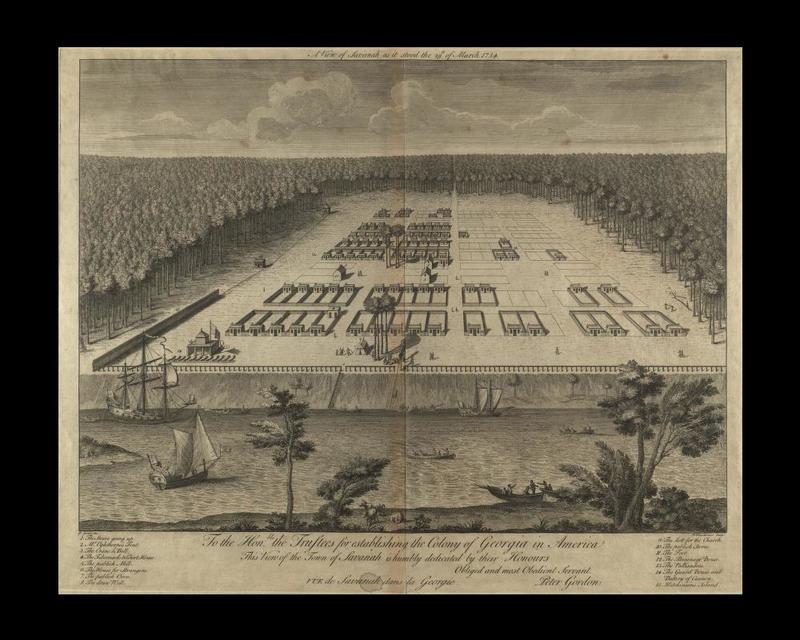Savannah in 1734
In The Georgia Historical Quarterly Whitefield claimed that once he arrived in Georgia he found many orphans who, though under the care of the Trustees, were in a miserable state due to the neglect of their guardians. Some orphans were dispersed among various families who by their bad example cancelled any good the orphans had learned in school. Among others were engaged in hard service where they received little to no education at all. Whitefield maintained, then, that the only solution was to obtain a house and land for the orphans where they could learn to labor, read, write, and become religious. Whitefield tried to preach in many churches as it was necessary to acquire the sufficient funds for the orphanage. After concluding his preaching tour in April, 1739, Whitefield triumphantly reported to the Trustees that he had collected 500 pounds for the orphanage. Feeling confident, he asked the Trustees for a grant of 500 acres to himself with the privilege of leaving it to whom he pleased. He promised to ask for no salary for himself or for his friends, but if the Trustees were unwilling to agree to his demands he would terminate the orphanage project. Doing what he said, George Whitefield arrived to Savannah and on the very morning rode out with a party of friends to view Habersham’s tract for the orphanage. James Habersham had acquired 500 acres of land ten miles south of Savannah on the Vernon River. Habersham had already cleared several acres of land, erected some fencing, and stocked the property with cattle and poultry.
